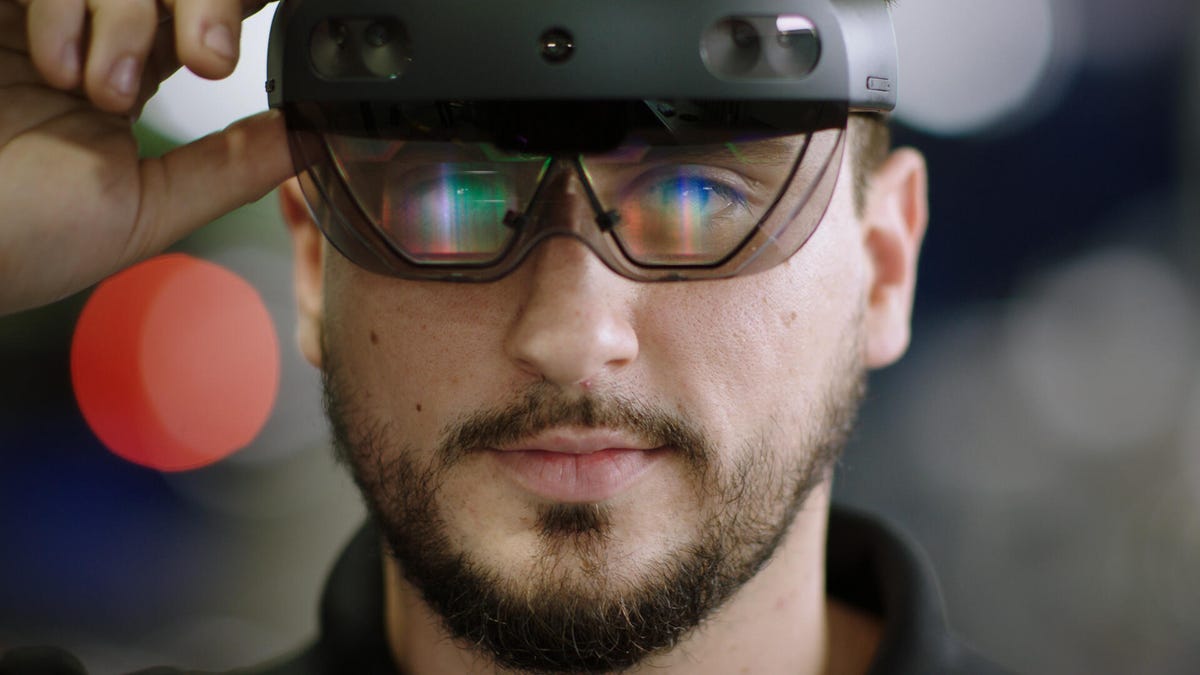Mercedes-Benz using Microsoft HoloLens 2 for faster, safer vehicle service
Mercedes-Benz technicians are using mixed reality and remote support tech to improve vehicle service and maintenance.

Mixed reality tech is like having an expert on your shoulder... or, rather, in your eyeballs.
In an attempt to improve service speed and the safety of its workers, Mercedes-Benz is arming its dealership maintenance and service technicians with a new Mercedes-Benz Virtual Remote Support system powered by Microsoft HoloLens 2 and Dynamics 365 Remote Assist tech.
Though technically based on technology nearly 150 years old, modern vehicles are ridiculously complex and high-tech. Most dealership technicians are trained well enough for routine maintenance, but occasionally a new technology or tricky problem pops up, requiring a highly trained specialist to travel around to dealerships to train the staff to deal with it. Mercedes and Microsoft's partnership aims to make receiving specialist help or training easier with augmented reality and remote presence tech.
"This is a massive shift in the way we do business and is especially timely with the new realities of COVID-19 and our desire to keep employees safe," said Christian Treiber, vice president of customer services at MBUSA. "Through our partnership with Microsoft, we have a new paradigm for technology support and communication that helps our dealers and technicians master the complexity of these vehicles while eliminating travel time and onsite visits. It's like having an expert on your shoulder."
The specialist will be able to see what the technician sees and overlay relevant data holographically.
Here's how Mercedes-Benz Virtual Remote Support will work: At the dealership, a technician seeking help with a problem or training dons the HoloLens 2 headset, which is able to overlay a mixed reality environment with intricate 3D images and holograms atop their field of view. The technician is then linked with a Mercedes-Benz specialist working remotely who can see what the tech sees and communicate in real-time -- manipulating the holographic information with annotations, highlighting areas of focus, pointing at things in the real world and presenting documents and service manuals.
Mercedes-Benz Virtual Remote Support is rolling out to all of the automaker's 383 dealerships across the US, and the potential benefits are myriad. The onsite technicians gain experience and quick answers to maintenance questions, allowing them to work more efficiently. Amidst concerns relating to COVID-19, both the tech's and the specialist's safety are improved due to reduced contact. Less service-related travel also means less environmental impact and CO2 emissions.
Your service department may soon be full of technicians talking, touching and gesturing at thin air.
For you, the humble customer, this new system could mean faster turnaround when you bring your vehicle in for service (and hopefully less "Yeah nah, we couldn't find the problem" from poorly trained technicians.)
Mercedes-Benz claims this is "the first mixed reality automotive maintenance system" and it may well be, but it's far from the first automaker to use Microsoft's HoloLens tech. Audi and Volkswagen have used the tech as an educational tool for customers and media. Volvo started experimenting with HoloLens as part of its engineering process in 2016 and Ford added the tech to its design toolbox in 2017.

